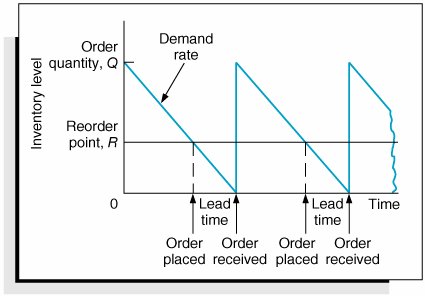As the system of International Business is becoming more complex,
the robust knowledge application complexities are being aided by computer all
along the ages. Computer upgrades is a natural change in conjunction with the
demand of the International Business Operations.
As of today, logistics system and operations
management in particular is using the most highly specialized system of
engineering and statistics applied in Operations Management and logistics and
the International Business as a whole.
The fundamental concept of Fixed Order Quantity is a common
theory being used generally by International Logistic companies (as 3PL)
applied in any given Multinational Company (MNC) operating business globally.
FIXED ORDER QUANTITY MODEL:
The main objective of this theory is to make sure that the
existing company operating the business must not go out of supply for the
customers. We can rationalize, that if a
retailer store in particular can supply the general consumer every single day
without any lapses, customer loyalty towards the product and the business
organization as a whole will build-up through the years of business
operation.
The main aspect of this theory is to know the re-order point
of the company, as to when to re-order the goods again to supply a specific
retailer outlet for example. But during
the re-ordering time, a SAFETY STOCK must be available to continue supplying
the customers while the new stock is still on its way.
The system usually applies the FIFO method
but considering the characteristic of the product and the nature of the
business, sometimes LIFO method is also considered. The basic system of Fixed Order Quantity
Model will affect to the whole supply chain causing one part of the system to
another.
If one segment of the supply
chain will be delayed the whole process of the system will be affected. The term “bottle-neck” is another dilemma
that will delay the whole supply chain movement.
Order Quantity= Average demand over the vulnerable period+
Safety Stock- Inventory currently on hand
A.silent:link, A.silent:visited, A.silent:active { color: black; text-decoration: none; }
A.silent:hover { color: red; text-decoration: underline; }
Silent Link








Comments